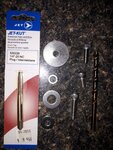I can think of two things.
The strongest argument is that mid-drives, all other things being equal, can climb steeper hills.
The somewhat less strong argument is that a mid-drive uses fewer watt-hours per mile, so you can go further on a given battery charge.
At slower speeds mid-drives do have an efficiency and typically a torque advantage vs a direct drive hub but the torque advantage may not be there vs a geared hub drive.
I think so much of an ebike's performance is perceived during slow hills climbs and from 0 to say 12mph that mid drives tend to get all the performance praise, but if you ride your ebike for commuting and tend to spend a lot of your riding time closer to 32kph / 20mph you should really consider a higher power rated direct drive hub motor or a somewhat lower rated geared hub motor.
The simplicity of a direct drive hub motor should not be ignored if you want a super reliable ebike.
